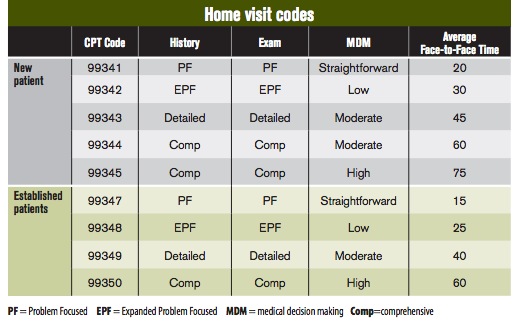Article
How physicians can get paid for home visits
DOWLING Contributing authorGETTING PAID FOR HOME VISITSRenee Dowling is a billing andcoding consultant with VEIConsulting in Indianapolis, Indiana.Send your coding questions to:medec@advanstar.com.I am in private practice and recently did a home visit, one-hour evaluation for the first time. What is the code for the initial home visit and then subsequent visits?
Q: I am in private practice and recently did a home visit, one-hour evaluation for the first time. What is the code for the initial home visit and then subsequent visits?
A: While home visit evaluation and management (E/M) codes tend to pay a little more than the office visit E/M codes, there are some tips to keep in mind when documenting and billing home visits:
Leave box 32 of the CMS-1500 form blank when services are provided in the home. Although box 32 is normally where you would put the address of the facility or office where the services were performed, services performed in the patient’s home is the exception.
Select place of service code 12 (patient’s home) so carrier knows to refer to the patient’s address. This code should be reported in box 5 (patient’s address) of the CMS-1500. You don’t have to repeat the address information.
Specify medical necessity and note external factors affecting the patient. Make sure your documentation is clear as to why the home visit is necessary and the acuity of the patient’s condition. Include the reason the patient can’t be seen in the office.
Consider more than clinical factors when documenting. For instance, a pertinent change in the patient’s environment. For example, while a patient with severe osteoarthritis can safely travel to the office in the summer; winter months may be a different story. Make sure your note clearly states the contraindications of the patient traveling in the winter.
Document why the patient was seen at home. A separate section should be added to explain why the patient needed to be seen in his/her home rather than in the office that day. All clinical and non-clinical factors should be included in addition to your rationale for establishing medical necessity.
Show how chronic conditions change over time. If you visit the patient in his/her home on a regular basis, be sure that each note shows how the patient’s condition has changed. Avoid cloned or copied documentation that does not explain how the patient’s condition has improved or deteriorated.






